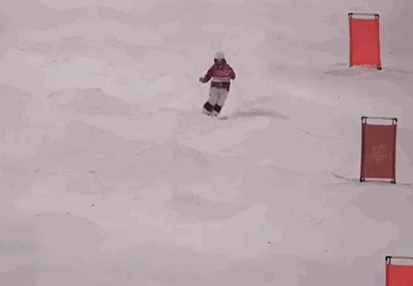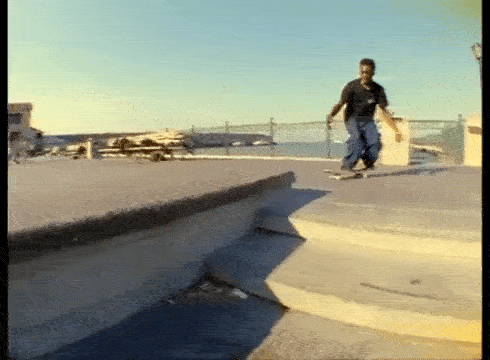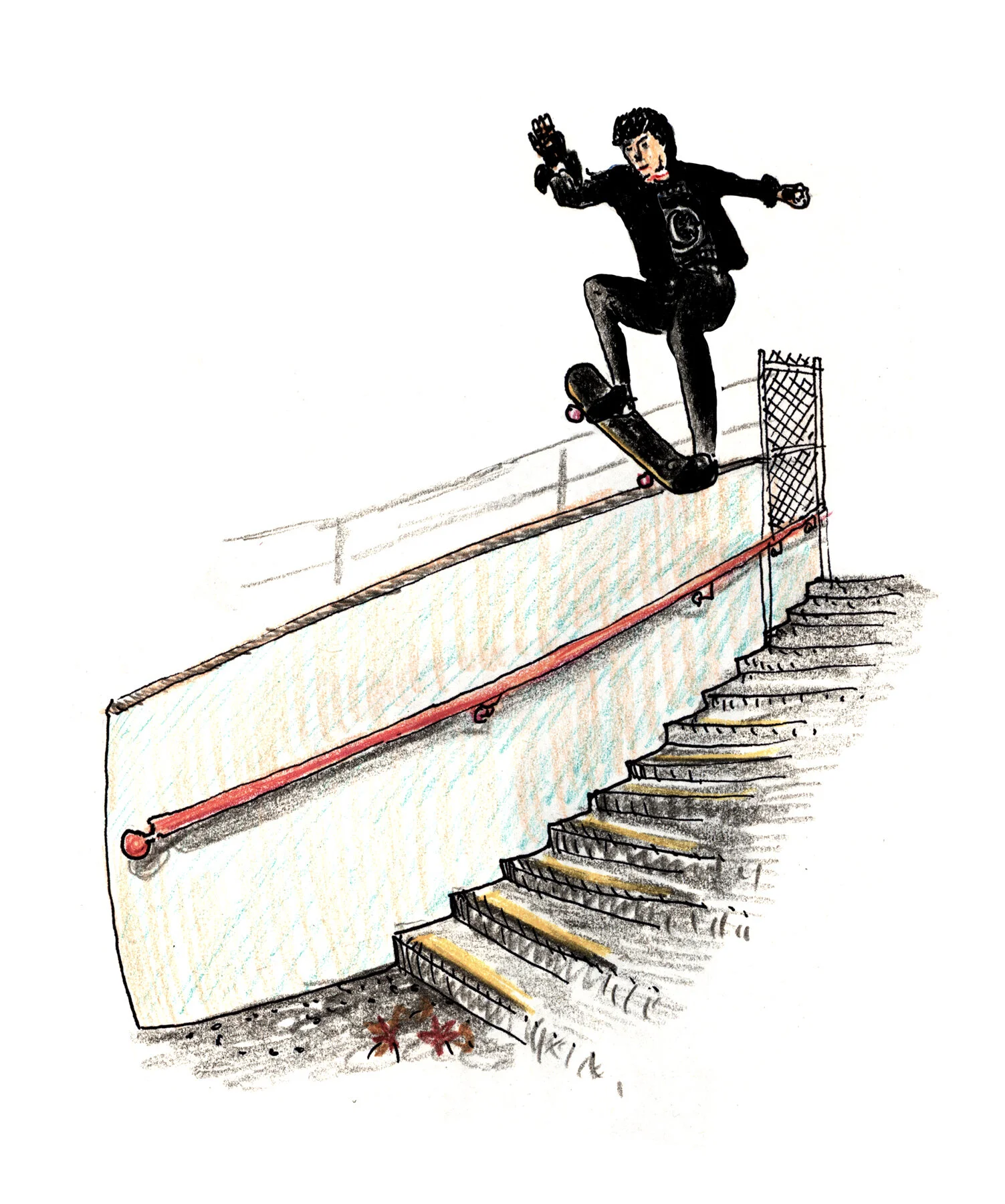Considering the Ideal Skate Outfit
Words by Christian Kerr
Illustrations by Adam Abada
The other night I found myself watching a mogul skiing competition and marveling at the skiers’ outfits. They were all dressed predictably enough: light colored jackets and snow pants with a little trim of color along the sides. Each competitor also had black patches applied just below the knees—an invariably clunky contrast to their otherwise cohesively-colored outfit. As they blurred down the mountain those patches were all I could focus on. Curious, I questioned Google, “black patches knees mogul skiier why,” and learned two things: there’s only one i in the word “skier,” and the patches are working just as designed, to keep the viewer’s eye transfixed.
It turns out mogul skiers are judged not only on how fast they make it to the finish line, but also on their style, how smoothly they manage to make their descent appear. A major indicator of good mogul style is in the knees, how close they are and how synchronized their movements, and the dark fabric patches highlight any sliver of white snow that might peek through as a skier loses control. A few clicks later and I learned there’s also special camouflage designed specifically to smooth out the jerky appearance of a skier bouncing down the humps. Mogul skiing has effectively developed a scientific sartorial method to enhance their preferred style, and, as a skateboarder, I was inspired.
Us skaters love to talk about style, but we don’t really have a consistent way in which to determine it. Unlike in moguls, there are no guidelines that define what is stylish and what isn’t. This vagueness has engendered a motley crew, where people that dress dramatically different and do wildly different tricks at drastically different spots from one another can all be argued to be stylish skateboarders.
How is such a broad understanding of what can be considered ‘good style’ possible? If, as Sean Pablo says, style is “just the way you look doing tricks,” then I guess that means good style is dependent on two factors, the trick, and the way you look when you’re doing it. In order to better understand the relationship between those two variables, I flattened them into a graph, with an x-axis that ranges from a baggy to a more form-fitting silhouette of the skater, and a y-axis that spans the type of skating being done, from low impact, technical trickery to gnarly, put-your-life-on-the-line hucking.
From this Ideal Outfit Matrix™ we should be able to plot where various skaters fit and, maybe even determine some trends. Around the center I would place skaters like Ishod Wair, Ryan Lay, and Elissa Steamer, whose clothing is neither too loose nor tight, an approximate 3” of space between knee and fabric with proportionally sized tops, and whose skating can range from stair set singles to longer ledge lines. If we proceed to place a few other skaters notable for their styles accordingly across the map–you can do the same at home with whatever skaters you want–we can start to recognize the areas where the ‘fits compliment the tricks, and also where it does not.
Interestingly, many skaters seem to pick similar silhouettes for similar sorts of skating. The seminal Gangster Skater VS. Punk Skater YouTube video says it all, with skinny-fits most often flying down gaps and baggy-fits booming through ledge and manual lines.
Fortunately, our subconscious style compass has steered the majority of us well, to staying within the “good style” band that stretches from the I quadrant (let’s call that The Skeleton), across the center and into the III (the SAG). What exactly are the reasons why the skaters that fall within this pattern are considered stylish though? Let’s dive into them and analyze why they work.
QUADRANT III, THE SAG
Deep in the Loose Fit, Tech Tricks quadrant lies the perfect point for skaters that prefer flipping in and out of tricks in long lines. I’m calling this area the SAG, after the brilliant Smolik x Osiris product line that allowed a pair of swishy track pants to securely attach to the top of a pair of shoes, refining the Goofy Boy bagginess for the new millennium and becoming the ur-prototype for the many baggy varieties of today.
Some of the great skaters of the SAG quadrant are, obviously, Peter Smolik, Rob Welsh, and a younger Stevie Williams, who has recently moved to the far right of the x-axis in a sort of personal case study of the theory. In this same quadrant also fits folks like Gilbert Crockett and Bobby DeKeyser, who rock a wide cut leg cropped just enough to show some sock.
The key to the SAG is the way the looseness of the gear mutes the maniacal flailing often necessary to perform really tech tricks, while still allowing the shoes to be seen so that the footwork can be noted. It also has the effect of whipping in the wind as a skater cruises between their tricks during a line, adding a dynamism to the skater even as they’re at their most still and stilted.
To better recognize the benefits of the SAG silhouette to low-impact skateboarding, we can look to the alternative to prove the rule. Think of a skater wearing super skinny jeans and a tight t-shirt flinging their board at a ledge or balancing on a manual, perhaps the seat of their pants creeping ever-deeper into the clefts of their ass cheeks. Maybe you thought of that Billy Marks line in Good & Evil, or one of Zero-era Chris “Cobra” Cole’s concoctions, or Chris Haslam’s whole schtick. Either way, all of these individuals exemplify the problems of a skinny-fit skate ‘fit doing tech tricks–everything is just too visible. Without the mystique within which the SAG shrouds the body, skateboarders are exposed for what they are–bruised bodies wiggling their appendages, madly making a toy flop around on a curb.
Of course, this can be taken too far, with pants so large you lose sight of the skateboard in a swirling dervish of denim, but it seems well established that you’re going to look better in baggy if you’re getting tech.
Once the tricks start traveling up that y-axis into the more gnarly, baggy clothes can actually become a hindrance to having good style. The most infamous offender in this quadrant would be Josh Kasper, who, legend has it, used the extra legroom in his oversized denim to conceal secret knee pads that let him slide out of massive drops over DJs uninjured. In his case, maybe a skinnier fit would’ve allowed him to skirt the controversy of the rumor mill. He should’ve looked across the y-axis, towards the Skeletons who’ve gotten it right.
QUADRANT I, THE SKELETON
High up and far out in the first quadrant lurks The Skeleton silhouette, gnarly skating performed in skin tight garments. There are many practitioners of this ‘fit to look towards as exemplary Skels: Ali Boulala, Corey Duffel, Ragdoll, and Greco (from about 2001-2007) come to mind for me. Skinny-fit clothes hug the human body and, as outlined in the exceptions from the previous section, emphasize the contortions needed to do whatever trick is being done. That may be a negative while windmilling your arms trying to hold your balance on a switch manual, but it becomes appealing when you’re doing something death defying down a dozen stairs.
The Skeleton silhouette impresses on a psychological level, alerting the viewer that what is being done is in fact possibly dangerous to the skater. Where, after all, is his protection? There’s no space in an extra snug pant to hide any padding, no billowing hoodie to pillow your fall. The human body in all its frailty can actually be appreciated for the turmoil the trick of gravity and inertia plays on it. Skateboarding is dangerous, see! Witness this body–just as fragile as yours–hurdle through the sky over metal and concrete and escape without a scratch and with a smile.
This silhouette, though, can also be taken to too far. For instance, consider Aaron ‘Jaws’ Homoki, who has an unfortunate tendency to heave himself down mammoth sets in nothing but a pair of bulky shoes and hammer gloves. (It’s possible he resorts to such ballsy lengths to compensate for sneakily wearing protection when he melon grabbed the Lyon 25.) While one might think that going nude would further push the beneficial qualities of the Skeleton silhouette, it actually serves to discredit the skating. If you’re confident enough in your abilities to send it safely buck naked, the trick you’re doing suddenly doesn’t seem as gnarly anymore. Unless your body is completely bruised and bloody, the viewer knows you haven’t taken a heavy slam yet, and will just assume whatever it is you’re doing is easy. Your best bet to look good in flight is to settle in somewhere along the skinny spectrum closer to spandex.
Of course, this is a super simplified theory, failing to account for transition skating, lesser-employed outfits like dresses and skirts, and whatever it is exactly that Nyjah is wearing these days. But it’s a start at a unified understanding of how what we wear and what we do interplay with one another, and potentially a whole new way of picking our fits to match our trick. At the very least it gave me a good excuse to not jump down that stair set–my pants are just too baggy.
Shoutout to Frozen In Carbonite and Quarter Snacks for their pants content.











